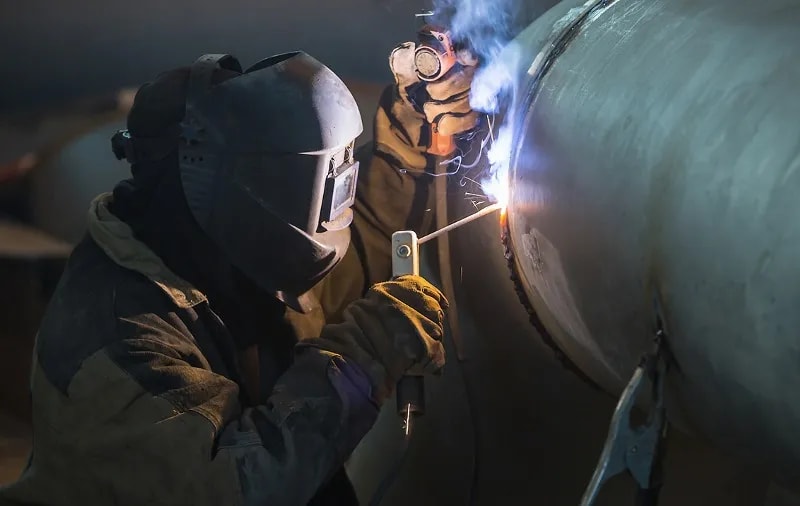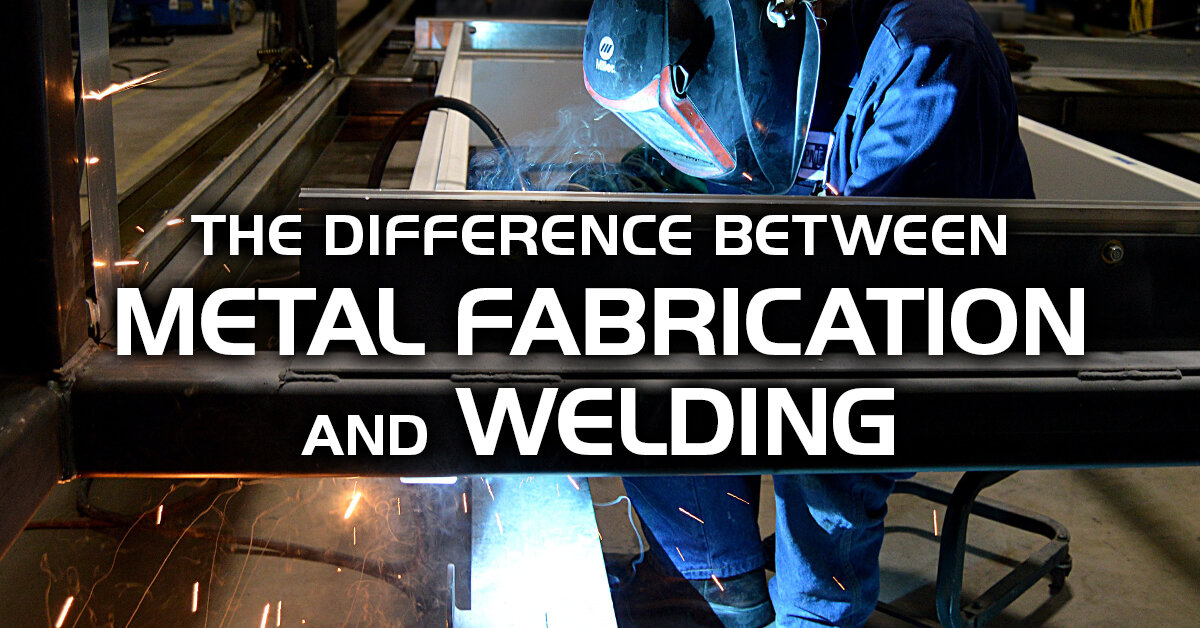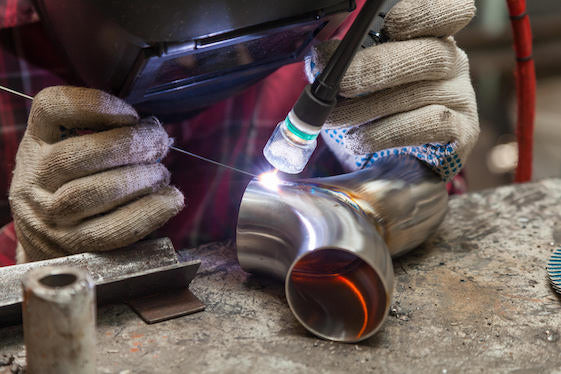Typical Welding Fixing Issues and Exactly How to Address Them Effectively
Welding repairs frequently run into a series of concerns that can endanger the honesty of the end product. Usual problems consist of insufficient penetration, porosity, and imbalance, to name a few. Each flaw offers one-of-a-kind obstacles that require particular techniques for resolution. Comprehending these concerns is necessary for welders intending to boost their skills and outcomes. This conversation will discover these usual welding repair issues and efficient methods to address them.
Inadequate Infiltration
Insufficient infiltration takes place when the weld steel stops working to totally fuse with the base product, causing weak joints and possible architectural failures. This concern frequently originates from not enough warm input, incorrect electrode angle, or improper welding rate. Welders may come across poor penetration because of a miscalculation of the necessary parameters for a specific material density or type. Furthermore, contamination on the base product's surface can impede efficient bonding, aggravating the problem. To address inadequate infiltration, welders ought to guarantee proper setups on their devices and preserve a clean work surface. Normal evaluation of welds is advised to determine any shortages early, permitting timely modifications and the avoidance of endangered architectural stability in bonded settings up.
Porosity
Porosity is a typical defect in welded joints that manifests as little gas bubbles caught within the weld steel. This flaw can endanger the integrity of the weld, leading to lowered stamina and prospective failure under stress and anxiety. Montana Mobile Welding and Repair. Porosity usually emerges from contamination, moisture, or improper welding strategies, which enable gases to escape right into the liquified weld pool. To address porosity, welders must guarantee appropriate surface prep work, preserve a tidy functioning environment, and utilize appropriate welding specifications. Furthermore, selecting the appropriate filler material and protecting gas can alleviate gas entrapment. Regular examination and screening of welds can aid determine porosity early, assuring timely restorative activities are taken, therefore maintaining the top quality and reliability of the welded structure
Imbalance
Misalignment in welding can occur from numerous elements, consisting of improper setup and thermal expansion. Recognizing the origin creates is necessary for efficient resolution. Several improvement techniques are offered to realign elements and ensure structural honesty.
Sources of Imbalance
Welding imbalance frequently comes from a range of underlying issues that can endanger structural integrity. One key reason is incorrect fit-up of components before welding, which can result in gaps and unequal surface areas. Variants in thermal growth during the welding procedure can additionally cause distortion, especially if the materials being joined have different coefficients of development. Furthermore, insufficient clamping and fixturing might fail to hold elements securely in place, resulting in activity throughout welding. Inadequately conserved devices, including welding machines and devices, might introduce variances in the weld grain, additional adding to imbalance. Driver mistake, stemming from insufficient training or experience, can additionally play a considerable role in producing misaligned welds.

Improvement Strategies Readily Available
Addressing imbalance effectively calls for a mix of rehabilitative methods tailored to the particular issues at hand. One common approach is the usage of jigs or components to hold elements in the proper setting during welding, ensuring consistent placement. Furthermore, preheating the products can aid minimize distortion and improve fit-up. For significant misalignment, mechanical adjustment techniques, such as using hydraulic jacks or clamps, can be utilized to fix the placement prior to welding. Post-weld heat treatment might additionally be essential to alleviate stresses created by imbalance. Ultimately, careful evaluation and adjustment during the arrangement stage can protect against misalignment problems from becoming significant issues, advertising a smoother welding procedure and boosting general structural stability.
Distortion
Distortion is a typical difficulty in welding that can occur from various variables, consisting of uneven heating & cooling. Understanding the root causes of distortion is necessary for applying effective avoidance techniques. Resolving this concern not just boosts architectural stability however likewise improves the overall top quality of the weld.
Reasons for Distortion
When based on the extreme heat of welding, products frequently undergo changes that can result in distortion. This phenomenon primarily occurs from thermal growth and contraction during the welding procedure. As the weld location heats up, the product broadens; upon cooling, it gets, which can develop internal anxieties. In addition, irregular heating across a work surface can exacerbate these tensions, causing warping or bending. The sort of product also plays a substantial duty; metals with differing thermal conductivity and coefficients of development may respond in a different way, causing uncertain distortions. In addition, inadequate joint style and poor fixturing can contribute to imbalance throughout welding, raising the chance of distortion. Understanding these reasons is important for effective welding repair service and avoidance methods.
Avoidance Techniques
Reliable avoidance methods for distortion throughout welding emphasis on regulating heat input and ensuring proper joint style. Maintaining a regular heat input assists to lessen thermal growth and contraction, which can bring about distortion. Utilizing strategies such as pre-heating the work surface can likewise reduce the temperature gradient, advertising consistent heating. In addition, selecting suitable joint layouts, such as T-joints or lap joints, can enhance stability and decrease stress concentrations. Carrying out correct fixturing to safeguard the work surfaces in position additionally aids in preserving positioning throughout the welding procedure. Finally, staggered welding sequences can distribute warmth more evenly, stopping local distortion. By applying these techniques, welders can considerably lower the chance of distortion and enhance the overall quality of their welds.
Splitting
Fracturing is an usual concern encountered in welding repair work, commonly arising from numerous variables such as incorrect cooling prices, product choice, or poor joint prep work. The incident of fractures can considerably endanger the integrity of the weld, resulting in possible failings throughout operation. To address this issue, welders should first assess the origin, making certain that products are suitable and properly picked for the details application. Additionally, managing the air conditioning rate during the welding process is important; rapid cooling can induce anxiety and lead to splitting. Proper joint style and preparation likewise add to lessening the threat. Executing these techniques can boost weld top quality and sturdiness, eventually lowering the probability of cracking in completed weldments.

Insufficient Blend
A significant concern in welding repair services is incomplete blend, which occurs when the weld metal does not effectively bond with the base product or previous weld passes - Montana Mobile Welding and Repair Welding. This problem can bring about weaknesses in the joint, potentially jeopardizing the stability of the welded framework. Aspects adding to incomplete fusion include inadequate heat input, improper welding technique, and contamination of the see this site surfaces being signed up with. To resolve this concern efficiently, welders should guarantee proper pre-weld cleaning and surface area preparation, as well as adjust their welding parameters to accomplish ample penetration and blend. Routine evaluation throughout the welding process can additionally help recognize insufficient blend early, enabling prompt restorative measures to boost the general top quality of the weld
Overheating
While welding repairs can boost architectural integrity, overheating provides a substantial obstacle that can cause product deterioration. Excessive warm throughout welding can alter the mechanical buildings of steels, leading to reduced toughness, increased brittleness, and bending. This phenomenon is specifically crucial in high-stress applications where structural integrity is extremely important. Determining getting too hot can include aesthetic evaluations for staining or distortion, as well as keeping an eye on temperature level during the welding procedure. To reduce the risks linked with getting too hot, welders should utilize ideal methods, such as regulating warm input, changing traveling rate, and making use of ideal filler products. Furthermore, applying pre- and post-weld warm treatments can assist restore product residential properties and improve the total quality of the repair service, making sure lasting efficiency and security.
Regularly Asked Concerns
What Are the Usual Signs of a Welding Flaw?

Exactly How Can I Test My Welds for High quality?
To examine welds for high quality, one can utilize visual inspections, ultrasonic testing, and radiographic methods. Each method assures architectural stability, identifies flaws, and validates adherence to specified criteria, eventually improving the reliability of the welded joints.
What Security Preventative Measures Should I Take While Welding?
When welding, one must prioritize safety by wearing ideal individual protective equipment, making certain correct ventilation, securing combustible materials away, maintaining a clean office, and recognizing surroundings to prevent crashes and injuries.
Can I Fix a Weld Without Redoing the Entire Joint?
Repairing a weld without redesigning the entire joint is feasible, relying on the damage (Belgrade Welding). Strategies such as grinding, adding filler product, or using a welding procedure can effectively resolve particular imperfections while maintaining the surrounding framework
What Equipment Are Essential for Efficient Welding Repair Works?
Essential tools for reliable welding repairs include a welding maker, cable brush, mill, protective gear, clamps, and filler products. Each device plays a vital role in guaranteeing high quality and safety and security during the fixing procedure. Porosity usually emerges from contamination, dampness, or inappropriate welding methods, which permit gases to get away into the molten weld swimming pool. Poorly kept devices, including welding devices and tools, may present inconsistencies in the article source weld grain, more adding to imbalance. When subjected to the extreme warm of welding, products usually undergo adjustments that can lead to distortion. Fracturing is a typical concern come across in welding fixings, frequently resulting from different variables such as inappropriate air conditioning rates, material selection, or insufficient joint prep work. A significant problem in welding fixings is insufficient combination, which takes place when the weld metal does not adequately bond with the aws welding base material or previous weld passes.
Comments on “What Belgrade Fabrication uses as essential steps for dealing with incomplete fusion”